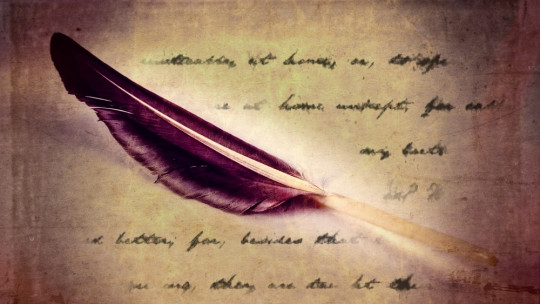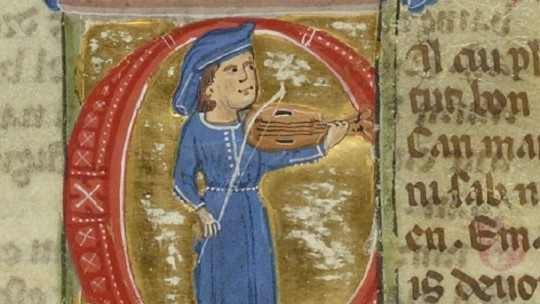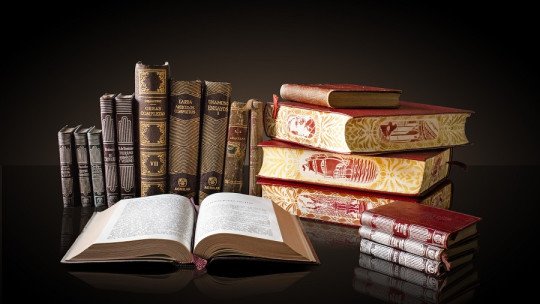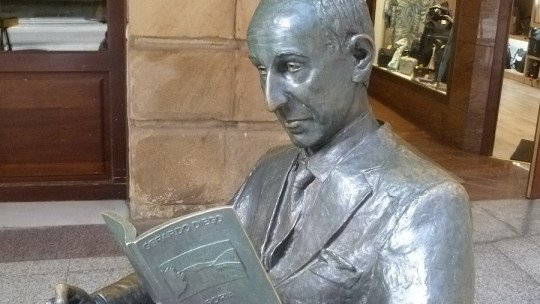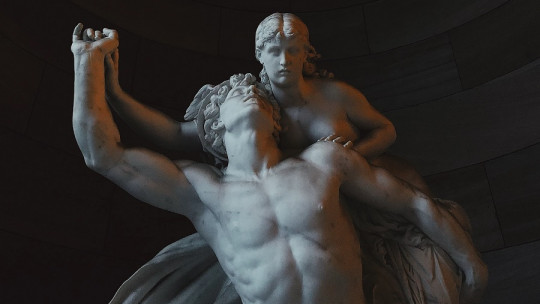
Poetry is probably the oldest literary genre We have clear examples of poetry in the Bible (the Song of songs and the Psalmsfor example), in classical Greek poetry, in the civilizations of the Indus Valley and in distant China.
On the other hand, poetry is a very extensive concept that encompasses several subtypes, depending on the information it transmits and the nature of said transmission. In this article we will give a brief review of the different types of poetry that exist and we will talk about how to differentiate each of them with famous examples from the world of literature.
The types of poetry and their characteristics
Poetry, a subjective genre par excellence, has allowed human beings to express their most intimate emotions and their most hidden thoughts through this art form.
Traditionally, poetry has been classified into three subgenres, namely: lyric poetry, epic poetry and dramatic poetry, to which some authors include some more, such as choral poetry or bucolic poetry. In fact, like everything related to human expression, it is difficult to establish clear boundaries, so the division can stretch practically to infinity.
In this article we will focus on the three classic subgenres which, in turn, can be expressed through compositions with their own characteristics. Let’s see it.
1. Lyrical poetry
It is probably the oldest poetic subgenre. Lyric poetry gets its name from the lirathe instrument with which, in Ancient Greece, the declaimer was accompanied Lyrical poetry is characterized by containing a high subjectivism, which is expressed through rhetorical figures and other literary resources, whose objective is to enhance the poet’s personal message.
Therefore, the most common thing is for the lyric to be expressed in the first person: it is the speaker who is expressing his inner world, his desires and his most intimate feelings. Generally, one can distinguish subjectthat is, the person who sings his emotions, and the objectwhich is nothing other than the element or person to whom the song is directed.

It is usual for lyric poetry to have love content but it can also talk to us about patriotic feelings, longing for a specific place or time or what the poet feels at that very moment.
The traditional compositions to express lyrics are basically four: the sonnet, the ode, the elegy and the epigram. Let’s see what each of them consists of and we will illustrate it with some examples.
1.1. The sonnet
The sonnet was born in Europe around the 13th century and its popularity extended until the 17th century. It consists of fourteen verses of major art, that is, more than eight syllables (generally, hendecasyllables) and its stanzas are grouped into two quartets and two tercets.
Here is an example of a sonnet by the great Garcilaso de la Vega (1499-1536); it is his famous Sonnet XXIII:
While of rose and lily
the color is shown in your gesture,
and that your ardent, honest look,
with clear light the serene storm;
and while the hair, that in the vein
of gold was chosen, with quick flight,
by the beautiful white neck, upright,
the wind moves, spreads and disorderes;
take advantage of your joyful spring
the sweet fruit, before the angry time
cover the beautiful summit with snow.
The icy wind will wither the rose,
light age will change everything,
for not changing their custom.
1.2. The ode
Another type of lyrical composition is the ode, which It is generally intended to praise the qualities of a character, an idea, a feat, etc His tone is elevated and reflective.
Here is an example of an ode, in this case, by the German poet Friedrich Schiller (1759-1805); a fragment of his acquaintance Ode to joyset to music by Beethoven in his 9th symphony.
Oh friends, let’s leave those tones!
Let us sing more pleasant songs
and full of joy!
Joy, beautiful flash of the gods,
daughter of Elysium!
Drunk with enthusiasm we entered,
heavenly goddess, in your sanctuary.
Your spell unites again
what bitter custom had separated;
all men become brothers again
there where your soft wing rests.
1.3. The elegy
As for the elegy, it is characterized by containing an eminently sad character. In the elegy, the poet expresses the sadness or nostalgia that he experiences when evoking something usually a person who has died or is absent.
It is essential to review here a fragment of the Elegy to Ramón Sijéwhich the Levantine poet Miguel Hernández wrote in honor of his best friend, who died at the age of twenty-two:
I want to be the gardener crying
of the land you occupy and manure,
soul mate, so early.
Feeding rains, snails
and organs my pain without instrument,
to the discouraged poppies
I will give your heart for food.
So much pain pools in my side,
Because it hurts, even my breath hurts.
1.4. The epigram
Finally, within the subgenre of lyrical or subjective poetry we have the epigram, a type of composition that is little known but widely used, especially in classical times
The epigram was born as a kind of epitaph, which the ancient Greeks chiseled on tombs or statues in memory of the character in question. Gradually, the epigram (from the Greek “to write on”) expanded its field of action, and already in the Middle Ages we found it as a very brief, incisive and forceful form of poetry. Here is an epigram by Fray Luis de León (1527-1591), an epitaph to Prince Don Carlos:
Here lie Carlos’s remains:
the main part turned to the sky,
with her was courage; he fell to the ground
fear in the heart, tears in the eyes.
2. Epic poetry
Epic poetry describes exploits of famous people, who They can be both true and legendary in nature They are usually very long poems, and can be classified into epics and epics, although both have very similar characteristics, as we will see below.
2.1. The epic
The epic is an epic story that is transmitted orally and, therefore, does not have a definitive form unless it is later captured in writing. This is the case of famous epics such as the Iliad and the Odyssey, by Homer, or the Mahabharata Hindu. The oldest known epic, however, is the poem or epic of Gilgamesh written in the 3rd millennium BC in ancient Mesopotamia based on oral accounts.
The poem recounts the adventures of the Sumerian hero Gilgamesh and his pilgrimage in search of the meaning of death. Here we offer you a fragment of this primal epic (version by Federico Lara Peinado):
Tears run down Gilgamesh’s face
(while saying):
-“(I am going to travel) a path
which I have never walked through.
(I’m going on a trip)
unknown to me.
(…) I should be happy,
with a joyful heart (…).
(If I win I will make you sit on) a throne.”
They brought him his armor,
(…) powerful swords,
the bow and the quiver,
and they put it in his hands.
He took the adzes,
(…) its trembling,
(the arch) of Anshan;
he put the sword in his belt.
They could begin the journey.
2.2. The song of deed
What, then, differentiates the epic from the song of deeds? Both talk about the exploits of heroes and characters somewhere between reality and legend. How to differentiate them?
The main difference is that the epics emerged during the centuries of the European Middle Ages and, generally, the events they narrate can be located in a specific historical moment (unlike the epic, which mixes gods and men in a remote time). ). Even more; In the case of the song of deeds, the language used is usually light and easy, since the minstrels were in charge of singing these feats in towns, roads and cities.
The example of singing de geste par excellence in the Spanish language is, of course, the Song of Mio Cid, by an anonymous author and which narrates the adventures of Rodrigo Díaz de Vivar, a Castilian knight of the 11th century. Here we collect a fragment, corresponding to the first of the poem’s songs, the so-called Song of Exile:
Of his eyes so strongly crying,
He turned his head and was tasting them.
He saw open doors and unlocked shutters,
Empty alcandars, without skins and without cloaks,
And without falcons and without molted goshawks.
My Cid sighed because he was very careful.
My Cid spoke, well and so measured:
-Thanks to you, sir father, who are on high!
-This has made my enemies bad!
3. Dramatic poetry
It is mainly related to theater since dramatic poetry includes the speeches of different characters.
We find abundant examples in the work of Lope de Vega (1562-1635), the great playwright of the Spanish Golden Age; Here is a fragment of scene III, act two, of his work The silly lady (1613):
NISE: Does a month seem like a short time to you?
I excuse you, don’t talk;
that the moon is in the sky
without mortal interests,
and in a month, and even a little less,
It is waxing and waning.
You on earth, and from Madrid,
where there are so many gales
of interests in men,
It wasn’t a miracle to move.
Tell him, Celia, what you have seen.
CELIA: Now, Laurencio, don’t be scared
that Nise, my lady,
This is how I treated you:
I know what you said to Finea
requisitions…
LAURENCIO: May you lift me up,
Celia, such testimonies!…

